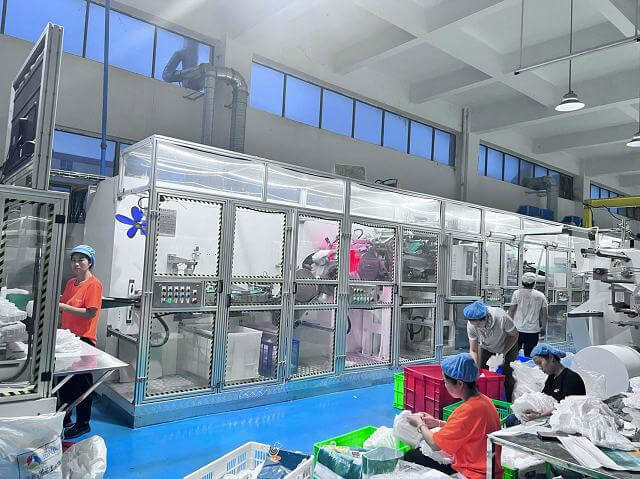Author:Haina Machinery Factory FROM:Diaper Machinery Manufacturer TIME:2023-11-09
Efficient Operation of an Infant Diaper Production Line

The production of infant diapers requires a highly efficient operation to meet the demand of the market. With the increasing population and awareness about hygiene, investing in a well-optimized production line is crucial for diaper manufacturers. In this article, we will explore the key factors that contribute to the efficient operation of an infant diaper production line.

One of the essential factors in the efficient operation of a diaper production line is automated material handling. This includes the use of robotic systems for material transportation, sorting, and feeding. By eliminating manual handling, the risk of errors and delays is reduced, resulting in a smoother production process.

Creating a continuous production flow is critical for efficient operation. This involves optimizing the layout of machines and equipment to minimize transportation time and avoid unnecessary bottlenecks. Additionally, implementing real-time monitoring systems helps identify any issues that may disrupt the production flow, allowing for immediate action to be taken.
Ensuring the quality of infant diapers is of utmost importance. Implementing comprehensive quality control measures throughout the production process helps prevent defects and guarantees consistency. This can include automated inspection systems, regular sampling, and testing procedures to detect any deviations from the set standards.
Regular machine maintenance is essential for preventing unexpected breakdowns and maximizing productivity. Implementing a proactive maintenance schedule, including routine cleaning, lubrication, and replacement of worn parts, helps minimize downtime. Additionally, utilizing predictive maintenance techniques that leverage data analytics can identify potential issues before they cause major disruptions.
A well-trained and skilled workforce plays a crucial role in the efficient operation of a diaper production line. Proper training programs should be implemented to ensure that all employees understand the operating procedures and safety protocols. Additionally, fostering a culture of continuous improvement and providing opportunities for skill development can enhance efficiency and productivity.
An effective supply chain management system is vital for the efficient operation of a diaper production line. This includes having reliable suppliers, optimizing inventory levels, and ensuring timely delivery of raw materials. Collaborating with suppliers and implementing advanced forecasting techniques can help reduce lead times and minimize inventory holding costs.
Energy consumption is a significant cost factor in the production of infant diapers. Implementing energy-efficient technologies and practices, such as using energy-efficient motors, optimizing heating and cooling systems, and implementing recycling programs, can help reduce energy consumption and lower production costs.
Utilizing data analytics and optimization techniques can significantly improve the efficiency of a diaper production line. Collecting and analyzing data from various stages of production helps identify bottlenecks, optimize production schedules, and improve overall equipment effectiveness. Additionally, implementing machine learning algorithms can enable predictive maintenance and optimize resource allocation.
In conclusion, an efficiently operated infant diaper production line requires a combination of automated material handling, continuous production flow, quality control measures, efficient machine maintenance, a skilled workforce, effective supply chain management, energy efficiency, and data analytics. By implementing these factors, diaper manufacturers can meet the market demand efficiently and ensure high-quality diaper production.
